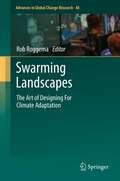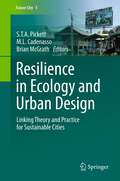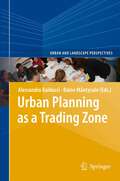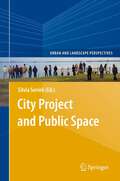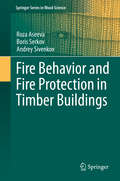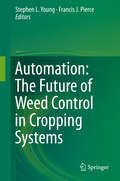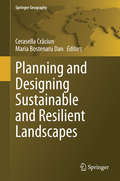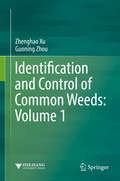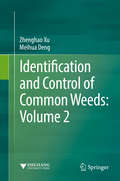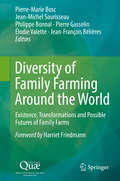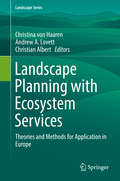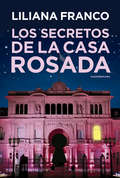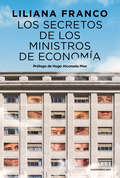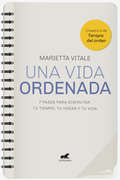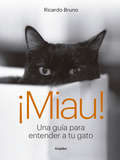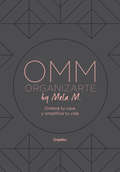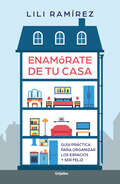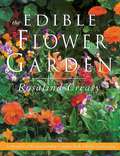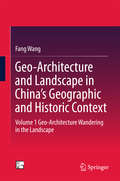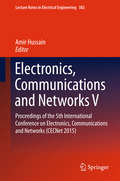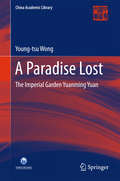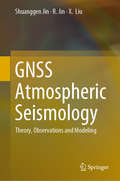- Table View
- List View
Swarming Landscapes
by Rob RoggemaThis book advocates a fresh approach to planning that anticipates, rather than reacts to, the changes in climate currently in process. Today's spatial planning procedures rely on historical evidence instead of preparing for factors that by definition lie in the future, yet which are relatively uncontroversial: shortages of water, sea level rise and rises in average temperatures being but three examples. Arguing for more flexibility, the contributors view 'complexity' as the key to transforming the way we plan in order to better equip us to face uncertainties about our future environment.
Resilience in Ecology and Urban Design
by S.T.A. Pickett Brian Mcgrath M. L. CadenassoThe contributors to this volume propose strategies of urgent and vital importance that aim to make today's urban environments more resilient. Resilience, the ability of complex systems to adapt to changing conditions, is a key frontier in ecological research and is especially relevant in creative urban design, as urban areas exemplify complex systems. With something approaching half of the world's population now residing in coastal urban zones, many of which are vulnerable both to floods originating inland and rising sea levels, making urban areas more robust in the face of environmental threats must be a policy ambition of the highest priority. The complexity of urban areas results from their spatial heterogeneity, their intertwined material and energy fluxes, and the integration of social and natural processes. All of these features can be altered by intentional planning and design. The complex, integrated suite of urban structures and processes together affect the adaptive resilience of urban systems, but also presupposes that planners can intervene in positive ways. As examples accumulate of linkage between sustainability and building/landscape design, such as the Shanghai Chemical Industrial Park and Toronto's Lower Don River area, this book unites the ideas, data, and insights of ecologists and related scientists with those of urban designers. It aims to integrate a formerly atomized dialog to help both disciplines promote urban resilience.
Urban Planning as a Trading Zone
by Raine Mäntysalo Alessandro Balducci'Trading zone' is a concept introduced by Peter Galison in his social scientific research on how scientists representing different sub-cultures and paradigms have been able to coordinate their interaction locally. In this book, Italian and Finnish planning researchers extend the use of the concept to different contexts of urban planning and management, where there is a need for new ideas and tools in managing the interaction of different stakeholders. The trading zone concept is approached as a tool in organizing local platforms and support systems for planning participation, knowledge production, decision making and local conflict management. In relation to the former theses of communicative planning theory that stress the ideals of consensus, mutual understanding and universal reason, the 'trading zone approach', outlined in this book, offers a different perspective. It focuses on the potentiality to coordinate locally the interaction of different stakeholders without requiring the deeper sharing of understandings, values and motives between them. Galison's commentary comes in the form of the book's final chapter.
City Project and Public Space (Urban and Landscape Perspectives #14)
by Silvia SerreliThe book aims at nurturing theoretic reflection on the city and the territory and working out and applying methods and techniques for improving our physical and social landscapes. The main issue is developed around the projectual dimension, with the objective of visualising both the city and the territory from a particular viewpoint, which singles out the territorial dimension as the city's space of communication and negotiation. Issues that characterise the dynamics of city development will be faced, such as the new, fresh relations between urban societies and physical space, the right to the city, urban equity, the project for the physical city as a means to reveal civitas, signs of new social cohesiveness, the sense of contemporary public space and the sustainability of urban development. Authors have been invited to explore topics that feature a pluralism of disciplinary contributions studying formal and informal practices on the project for the city and seeking conceptual and operative categories capable of understanding and facing the problems inherent in the profound transformations of contemporary urban landscapes.
Fire Behavior and Fire Protection in Timber Buildings
by Roza Aseeva Boris Serkov Andrey SivenkovThis volume describes fire behavior and fire protection of timbers in outdoors and indoors application mainly in construction industry. The Authors' novel approach considers the relationship between various species and age of timbers and its fire behavior at different thermal and fire loads. Quantitative data of ignition speed and flame propagation as well as generation of heat, smoke and toxic products are discussed. Analysis of fire resistance of various types of building materials based on timber of different species as well as the novel data on the effect of natural and accelerated aging of timbers on its fire behavior are discussed. The main practical methods of fire protection of new and ancient timber buildings and structures to increase its fire resistance are considered. The book should be useful for a wide range of readers: chemists, physicists, material scientists, architects, engineers, constructors and restorers.
Automation: The Future Of Weed Control In Cropping Systems
by Stephen L. Young Francis J. PierceTechnology is rapidly advancing in all areas of society, including agriculture. In both conventional and organic systems, there is a need to apply technology beyond our current approach to improve the efficiency and economics of management. Weeds, in particular, have been part of cropping systems for centuries often being ranked as the number one production cost. Now, public demand for a sustainably grown product has created economic incentives for producers to improve their practices, yet the development of advanced weed control tools beyond biotech has lagged behind. An opportunity has been created for engineers and weed scientists to pool their knowledge and work together to 'fill the gap' in managing weeds in crops. Never before has there been such pressure to produce more with less in order to sustain our economies and environments. This book is the first to provide a radically new approach to weed management that could change cropping systems both now and in the future.
Planning and Designing Sustainable and Resilient Landscapes
by Cerasella Crăciun Maria Bostenaru DanThis book deals with planning issues in landscape architecture, which start at the evaluation of the existing fabric of society, its history and memory, approached and conserved through photography, film and scenographic installations, a way in which the archetypes can be investigated, be it industrial derelict sites or already green spaces and cultural landscapes. It provides approaches to intervention, through rehabilitation and upgrade, eventually in participative manner. To such evaluation and promotion a couple of disciplines can contribute such as history of art, geography and communication science and of course (landscape) architecture. The field of landscape architecture reunites points of view from such different disciplines with a view to an active approach a contemporary intervention or conservation. The book presents case studies from several European countries (Romania, Germany, Austria, Italy, Portugal) mostly for large landscape in the outskirts of the cities and in the parks.
Identification and Control of Common Weeds: Volume 1
by Zhenghao Xu Guoning ZhouThis book introduces readers to nearly 600 common weeds. In addition to essential information, each chapter includes photos for a specific type of weed to show its morphology in different growth periods, such as seedling, root, flower, fruit, and mature plant. The book also discusses control measures, including agricultural, chemical, physical, biological, and comprehensive methods. The Volume1 mainly focuses on 126 species of grass weeds and 34 species of sedge weeds. With the development of society and economics, weeds have become a recurring problem. In particular, the exotic, invasive, and quarantine weeds have spread dramatically and rapidly. On the other hand, many people, even those who are engaged in weed control, do not (or cannot) distinguish between weeds. Thus there is significant demand for illustrations of weed morphologies, as well as information on their control measures. This book offers a valuable, practical guide for all those working in the fields of crop cultivation, plant protection and quarantine management.
Identification and Control of Common Weeds: Volume 2
by Zhenghao Xu Meihua DengThis book introduces readers to nearly 600 common weeds. In addition to essential information, each chapter includes photos for a specific type of weed to show its morphology in different growth periods, such as seedling, root, flower, fruit, and mature plant. The book also discusses control measures, including agricultural, chemical, physical, biological, and comprehensive methods. The Volume2 mainly focuses on fern and 216 species of weeds of magnoliids or dicotyledoneae. With the development of society and economics, weeds have become a recurring problem. In particular, the exotic, invasive, and quarantine weeds have spread dramatically and rapidly. On the other hand, many people, even those who are engaged in weed control, do not (or cannot) distinguish between weeds. Thus there is significant demand for illustrations of weed morphologies, as well as information on their control measures. This book offers a valuable, practical guide for all those working in the fields of crop cultivation, plant protection and quarantine management.
Diversity of Family Farming Around the World: Existence, Transformations And Possible Futures Of Family Farms
by Jean-Michel Sourisseau Pierre-Marie Bosc Philippe Bonnal Pierre Gasselin Élodie Valette Jean-François BélièresThis book aims at explaining the nature and strength of the links between the families and their farms looking at their diversity throughout the world. To do so, it documents family farming diversity by using the sustainable rural livelihood (SRL) framework exploring their ability to adapt and transform to changing environments. In 18 case studies in Asia, Africa, Latin America and Europe, it shows how family farms resist under adverse conditions, seize new opportunities and permanently transform. Family farms, far from being backwards are potential solutions to face the current challenges and shape a new future for agriculture taking advantage of their local knowledge and capacity to cope with external constraints. Many coauthors of the book have both an empirical and theoretical experience of family farming in developed and developing countries and their related institutions. They specify «what makes and means family» in family farming and the diversity of their expertise draws a wide and original picture of this resilient way of farming throughout the world.
Landscape Planning with Ecosystem Services: Theories and Methods for Application in Europe (Landscape Series #24)
by Christina Von Haaren Andrew A. Lovett Christian AlbertHuman well-being depends in many ways on maintaining the stock of natural resources which deliver the services from which human’s benefit. However, these resources and flows of services are increasingly threatened by unsustainable and competing land uses. Particular threats exist to those public goods whose values are not well-represented in markets or whose deterioration will only affect future generations. As market forces alone are not sufficient, effective means for local and regional planning are needed in order to safeguard scarce natural resources, coordinate land uses and create sustainable landscape structures. This book argues that a solution to such challenges in Europe can be found by merging the landscape planning tradition with ecosystem services concepts. Landscape planning has strengths in recognition of public benefits and implementation mechanisms, while the ecosystem services approach makes the connection between the status of natural assets and human well-being more explicit. It can also provide an economic perspective, focused on individual preferences and benefits, which helps validate the acceptability of environmental planning goals. Thus linking landscape planning and ecosystem services provides a two-way benefit, creating a usable science to meet the needs of local and regional decision making. The book is structured around the Driving forces-Pressures-States-Impacts-Responses framework, providing an introduction to relevant concepts, methodologies and techniques. It presents a new, ecosystem services-informed, approach to landscape planning that constitutes both a framework and toolbox for students and practitioners to address the environmental and landscape challenges of 21st century Europe.
Los secretos de la Casa Rosada
by Liliana FrancoLas mejores anécdotas que desde el regreso de la democracia esconden las paredes de la Casa Rosada, la Meca con la que sueñan todos los políticos. Como todas las casas, la Rosada tiene vida cotidiana. Pero su día a día no se parece al de todos los hogares, porque las decisiones que allí se cocinan modifican la existencia de millones de personas. Poca gente es parte de esa vida: además de los funcionarios y los empleados, están los periodistas acreditados, que permanecen allí muchas horas para conseguir noticias de primera mano. Detrás de cada novedad que ellos divulgan hay historias, anécdotas y episodios que merecen ser conocidos. Un militar se creyó presidente y cuando llegó se enteró de que no lo era. Durante el juicio a las Juntas en 1985, hubo un Falcon viejo, con la chapa oxidada, estacionado varios días en la vereda. Antonio Banderas comió su primer choripán en la terraza, donde por esos años trabajaban telefonistas hot y acudían las "chicas del bolsito". Hay una palmera moribunda en el patio y un ascensor del que Mauricio Macri desconfía. Por la Rosada pasaron muchos funcionarios memorables, y cada presidente dejó algún recuerdo a quienes lo trataron durante su mandato. Liliana Franco -que trabajó en ella casi dos décadas- reunió estas y otras historias que, como un espejo deformado, reflejan a su modo los distintos períodos que atravesó nuestra democracia.
Los secretos de los ministros de Economía
by Liliana FrancoLas mejores anécdotas que desde el regreso de la democracia esconden las paredes y pasillos del Palacio de Hacienda. ¿Cómo se gestó la salida de Luis Caputo del Banco Central? ¿A qué ministro apodan Chocoarroz? ¿Qué hizo Amado Boudou con su despacho? ¿Cómo recuerdan en el Ministerio a Roberto Lavagna, Alfonso Prat-Gay, Axel Kicillof y Guillermo Nielsen? ¿Cómo fueron las eternas peleas con el Fondo Monetario Internacional? ¿Quién fue el mejor jefe? ¿Y el peor? La preocupación por la economía ocupa los primeros puestos de las encuestas porque -para bien o para mal- afecta la vida cotidiana y determina nuestro futuro. Pensamos que, antes de ser tomadas, las medidas son analizadas, sopesadas y debatidas por expertos. Si la realidad a veces nos hace dudar de ello, Los secretos de los ministros de Economía revela que ese recelo puede ser acertado. Como hizo en Los secretos de la Casa Rosada, Liliana Franco nos guía esta vez por las oficinas, las salas y los pasillos del Palacio de Hacienda. Tras años de trabajo en ese ámbito, ella como pocos conoce el detrás de escena de muchas decisiones controversiales y los aspectos ocultos del ascenso o la caída de personajes clave. A su manera, las historias de este libro muestran un costado desconocido de las formas en que los gobernantes y sus funcionarios más cercanos ejercen el poder; y pueden explicar cómo nos va...
Una vida ordenada: 7 pasos para disfrutar tu tiempo, tu hogar y tu vida
by Marietta VitaleUna vida ordenada, el nuevo libro de la interior planner Marietta Vitale, tiene como objetivo sumar la organización personal y hacer foco en nuestra primera casa, es decir, nuestro cuerpo. ¿Cómo hacer para que nos rindan las 24 horas del día, que parecen no alcanzar nunca para todo lo que debemos -y queremos- hacer? El fin de este libro es articular el orden de los espacios con la organización personal. Lograr un día a día más simple es posible. ¡Basta de "no tengo tiempo para nada"! En siete pasos, Marietta Vitale propone aprovechar el tiempo de la mejor manera. La autora ha ayudado a centenares de personas a cambiar su vida a partir del orden. Sin embargo, a veces otros aspectos de la vida siguen desorganizados. Para estar en equilibrio, este es el momento de centrarte en tus tiempos y tu cuerpo. La creadora de Terapia del orden ahora va un paso más allá con una guía pensada para que, a través del orden, hagas todo lo que querés, maximizando tu bienestar y el de quienes te rodean.
Soy Amo de Casa: Trucos y consejos para limpiar tu hogar ahorrando tiempo y dinero
by Soy Amo de CasaAprendé a limpiar organizadamente con productos hechos por vos y convertí tu casa en tu lugar en el mundo. Tu casa debería ser un lugar al quieras volver siempre. Y para eso, además de ordenada, tiene que estar limpia. Soy Amo de Casa te muestra las mejores estrategias para lograrlo, a la vez que te enseña cómo hacer tus propios productos de limpieza con solo dos o tres ingredientes. ¿Sabías que el vinagre hace magia? ¿A qué tenés que dedicarle más atención y con qué frecuencia? ¿Qué podés hacer con esa mancha que no sale con nada? ¿Y con el sarro de la bañera? ¿Es posible recuperar una olla quemada o dejar impecable una pava? ¿Hay una forma eficaz de limpiar azulejos y pisos? ¿Cómo lograr que la ropa no quede arrugada? ¿Cómo quitarles el olor a las zapatillas? Soy Amo de Casa es tu aliado perfecto. El experto que te ayudará a transformar tu casa en tu lugar en el mundo.
¡Miau!: Una guía para entender a tu gato
by Ricardo BrunoUna guía para saber por qué los gatos hacen lo que hacen y para aprender a comportarnos con ellos. Entender a ese animal fascinante es la llave para disfrutar de su compañía. Por qué se dice que los perros y los gatos tienen patrones de conducta diametralmente opuestos. Cómo es un gato "normal". Su comportamiento social. Su vida cotidiana. El cachorro, el adulto y el anciano. Gatos outdoor y gatos indoor. Machos y hembras. Qué le pasa a un gato que se muestra agresivo. Espacio y territorio gatunos. Sonidos, posturas, gestos y olores: el sistema de comunicación de nuestro gato y cómo descifrarlo. Qué nos está diciendo cuando nos acerca sus presas muertas. La cola. Las orejas. Por qué marca objetos y superficies con su pis, entierra sus excrementos o invierte horas en acicalarse. El cuerpo del gato: una máquina perfecta. Huesos, músculos, circulación, aparato digestivo, el pelo. Su increíble olfato y su potente visión nocturna. ¿Dulce o salado?: el gusto gatuno. Bigotes de equilibrista. Por qué le fascinan las alturas (dentro de nuestra casa). Acomodándose en el aire: la belleza y la perfección de su cuerpo cuando salta desde lo alto. Por qué es inútil invertir tiempo y esfuerzo en acostumbrar a un gato a que salga a caminar, gaste energía y lleve una vida más entretenida. El mejor método a la hora de educarlo. Por qué ama masticar nuestra ropa, arruinar nuestros muebles, hacer mil piruetas para intentar atrapar una gota de agua de la canilla o dormir de día y molestar a la noche. Los gatos que viven en hogares pequeños sin acceso al exterior o tienen dueños que no les permiten salir libremente. Los gatos que se van a otras casas y vagabundean de noche cuando tienen acceso al exterior. Cuáles son los signos de vejez en un gato doméstico. ¿Adoptar un gato bebé o un gato adulto? Ideas falsas (y no tanto) sobre los gatos. Cómo hacerlos felices. Incluye hermosas fotos, una guía felina de estilo y buenos modales, primeros auxilios y una lista con los Diez Mandamientos gatunos.
OMM Organizarte by Mela M.: Ordená tu casa y simplificá tu vida
by Melanie MelhemMelanie Melhem, organizadora profesional, propone una guía práctica para llevar una existencia liviana, en la que el orden y la organización no se conviertan en una obsesión, sino en un hábito que nos brinde más calidad de vida, armonía y placer visual. La organización es el camino hacia una vida más simple, pero para ordenar es necesario soltar, y eso es algo que nos cuesta mucho. Hay personas que conservan guías telefónicas o volantes de deliveries con números que están a un par de clicks en internet. En los cajones de la cocina suele haber utensilios rotos. En los placares, demasiadas prendas de ropa que ya no usamos. Y los juguetes de los chicos se adueñan de la casa. Entonces el problema no es la falta de espacio, sino el exceso de cosas. ¿De qué sirve una biblioteca con libros que no vamos a leer? ¿Por cuánto tiempo hay que archivar las facturas de luz y de gas? ¿Por qué, de pronto, tenemos la alacena llena de productos vencidos? ¿Para qué guardamos cincuenta collares si siempre usamos los mismos tres? ¿Cómo conviene organizar el lugar de trabajo? ¿Y armar una valija? ¿Cómo inculcarles la costumbre del orden a los chicos sin volverlos locos? Hoy las casas son más chicas que hace cincuenta años, por eso debemos ser conscientes y responsables acerca de los elementos que acumulamos. La house planner argentina Melanie Melhem propone varios consejos aplicados al mundo occidental para llevar una existencia más liviana. Y para que el orden y la organización no se conviertan en una obsesión, sino en un hábito que nos brinde una mayor calidad de vida.
OMM Organizarte by Mela M.: Ordená tu casa y simplificá tu vida
by Melanie MelhemMelanie Melhem, organizadora profesional, propone una guía práctica para llevar una existencia liviana, en la que el orden y la organización no se conviertan en una obsesión, sino en un hábito que nos brinde más calidad de vida, armonía y placer visual. La organización es el camino hacia una vida más simple, pero para ordenar es necesario soltar, y eso es algo que nos cuesta mucho. Hay personas que conservan guías telefónicas o volantes de deliveries con números que están a un par de clicks en internet. En los cajones de la cocina suele haber utensilios rotos. En los placares, demasiadas prendas de ropa que ya no usamos. Y los juguetes de los chicos se adueñan de la casa. Entonces el problema no es la falta de espacio, sino el exceso de cosas. ¿De qué sirve una biblioteca con libros que no vamos a leer? ¿Por cuánto tiempo hay que archivar las facturas de luz y de gas? ¿Por qué, de pronto, tenemos la alacena llena de productos vencidos? ¿Para qué guardamos cincuenta collares si siempre usamos los mismos tres? ¿Cómo conviene organizar el lugar de trabajo? ¿Y armar una valija? ¿Cómo inculcarles la costumbre del orden a los chicos sin volverlos locos? Hoy las casas son más chicas que hace cincuenta años, por eso debemos ser conscientes y responsables acerca de los elementos que acumulamos. La house planner argentina Melanie Melhem propone varios consejos aplicados al mundo occidental para llevar una existencia más liviana. Y para que el orden y la organización no se conviertan en una obsesión, sino en un hábito que nos brinde una mayor calidad de vida.
Enamórate de tu casa
by Lili RamírezEste libro te cambiará la idea de que eres desordenado por naturaleza y te ayudará a encontrar el bienestar a través de la organización de tu casa. Está comprobado que ordenar los espacios trae muchos beneficios: ayuda a enfocarse y a ser más productivos, reduce el estrés, mejora el sueño y genera felicidad. Parece una tarea titánica poner todo en su sitio, pero esta organizadora profesional te mostrará que no es difícil y te acompañará en el proceso de ordenar cada espacio: el clóset, la cocina, el baño, el depósito, la biblioteca. Además, te enseñará a planear una mudanza sin problemas, a preparar una maleta de viaje ligera, a tener un espacio adecuado de trabajo, y te dirá cómo guardar la decoración de Navidad para que el próximo año no sea una pesadilla sacar el árbol. Todo estará enfocado en un objetivo: volver a enamorarte de tu casa y disfrutar de ese lugar donde recargas energía.
The Edible Flower Garden
by Rosalind CreasyA comprehensive guide to selecting and growing flowers that can be used for cookery, both as garnishes and as ingredients.
Geo-Architecture and Landscape in China's Geographic and Historic Context
by Fang WangThis book explores the concept of geo-architecture by analyzing the ways architectures are related to the local geography, including mingling or contrasting with surrounding landscape, adapting to mountainous or aquatic terrain, and selection of construction materials. Architectures build with such skillfully contrived strategies and techniques have become live exhibit of folk customs and served to record in profound detail the long history of mankind's recognition of nature. The combined effect is such that the architecture grows out of the surrounding natural and human environment. This book is the third of a 4-volume book series. The series develops the innovative concept of "geo-architecture" by exploring the myriad influences of natural, human and historical factors upon architecture. These influences are considered in three categories, namely, interaction between architecture and nature, interaction between architecture and its human users and change in architecture over time--each category serves as a lens. Augmenting these lenses is the Time-Person-Place concept applied different geographic. The analysis ultimately focuses on two aspects: geographic influence on architecture and architectural response to geography. The over 1000 pictures of case architectures enriches the study with stunning and unique visual angles. "This unprecedented work will be a unique and valuable contribution to the literature. Integrating as it does the disciplines of architecture, landscape architecture, and geography, Wang Fang's voice is original, compelling, and will be much appreciated by English-speaking readers (and inside China, too, I can only imagine. )" Stephen M Ervin Assistant Dean Graduate School of Design, Harvard University July 2nd, 2013 "One reason for why there would be interest is because her research would fill some significant gaps in the literature. What is novel about Dr. Wang's series is that she further extends this intellectual project of looking at Chinese architecture through Chinese eyes, by taking it one provocative step further. " Annette M. Kim Associate Professor Department of Urban Studies and Planning, M. I. T. July 1st, 2013
Electronics, Communications and Networks V
by Amir HussainThis book comprises peer-reviewed contributions presented at the 5th International Conference on Electronics, Communications and Networks (CECNet 2015), held in Shanghai, China, 12-15 December, 2015. It includes new multi-disciplinary topics spanning a unique depth and breadth of cutting-edge research areas in Electronic Engineering, Communications and Networks, and Computer Technology. More generally, it is of interest to academics, students and professionals involved in Consumer Electronics Technology, Communication Engineering and Technology, Wireless Communication Systems and Technology, and Computer Engineering and Technology.
A Paradise Lost: The Imperial Garden Yuanming Yuan (China Academic Library)
by Young-Tsu WongThis book is aimed at readers and researchers who are interested in Chinese garden architecture, the rise and fall of Yuanming Yuan and the history of the Qing dynasty. It is the first comprehensive study of the palatial garden complex in a Western language, and is amply illustrated with photographs and original drawings. Wong Young-tsu's engaging writing style brings 'the garden of perfect brightness' to life as he leads readers on a grand tour of its architecture and history.
GNSS Atmospheric Seismology: Theory, Observations and Modeling
by Shuanggen Jin R. Jin X. LiuGNSS can detect the seismic atmospheric-ionospheric variations, which can be used to investigate the seismo-atmospheric disturbance characteristics and provide insights on the earthquake. This book presents the theory, methods, results, and modeling of GNSS atmospheric seismology. Sesimo-tropospheric anomalies, Pre-/Co-/Post-seismic ionospheric disturbances, epicenter estimation, tsunami and volcano ionospheric disturbances, and volcanic plumes detection with GNSS will be presented and discussed per chapter in the book.
Identification and Control of Common Weeds: Volume 3
by Zhenghao Xu Le ChangThis book introduces readers to nearly 600 common weeds. In addition to essential information, each chapter includes photos for a specific type of weed to show its morphology in different growth periods, such as seedling, root, flower, fruit, and mature plant. The book also discusses control measures, including agricultural, chemical, physical, biological, and comprehensive methods. The Volume 3 mainly focuses on 252 Species of Dicotyledonous and Monocotyledonous Weeds along with 2 Species of Liverworts and Mosses. With the development of society and economics, weeds have become a recurring problem. In particular, the exotic, invasive, and quarantine weeds have spread dramatically and rapidly. On the other hand, many people, even those who are engaged in weed control, do not (or cannot) distinguish between weeds. Thus there is significant demand for illustrations of weed morphologies, as well as information on their control measures. This book offers a valuable, practical guide for all those working in the fields of crop cultivation, plant protection and quarantine management.
